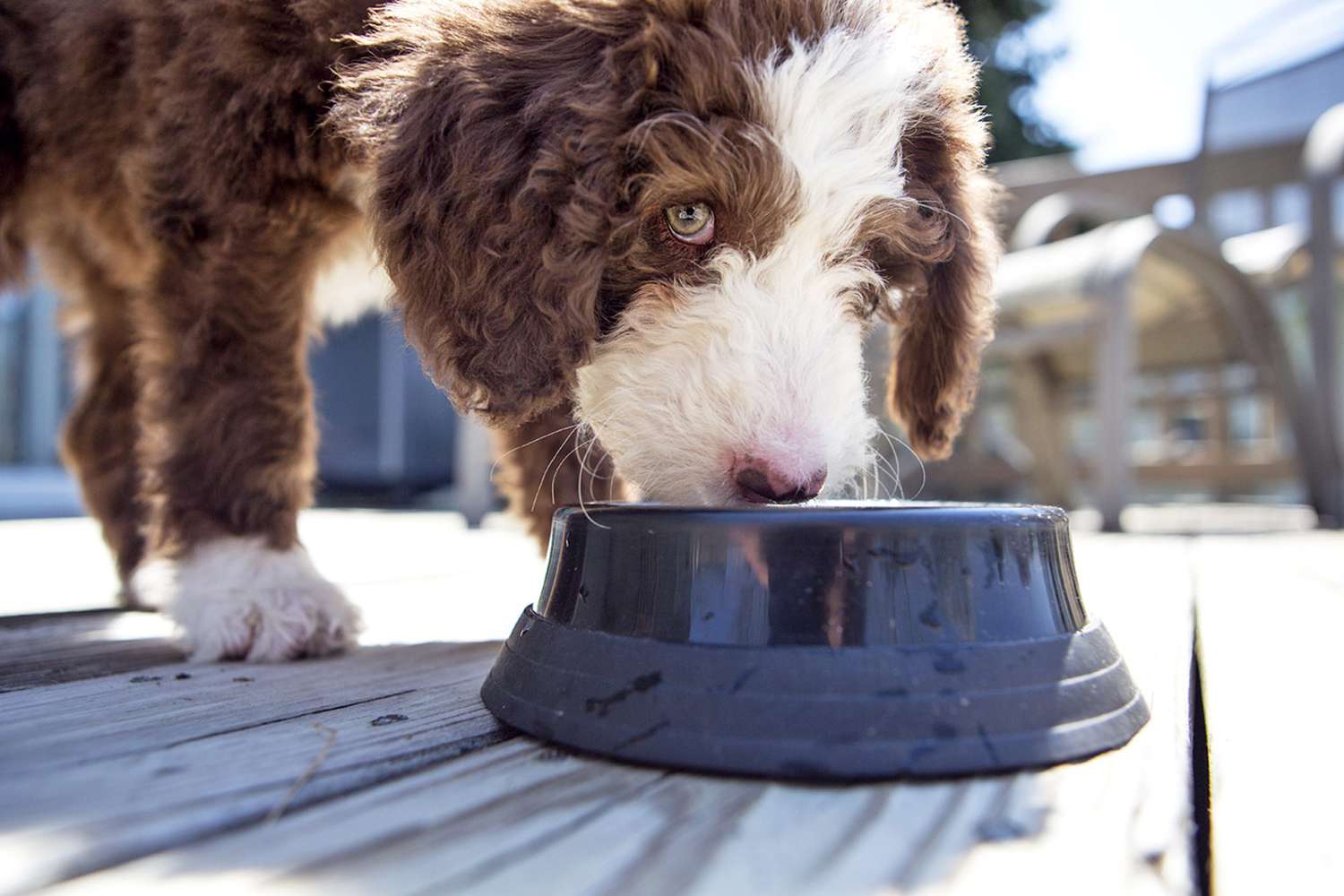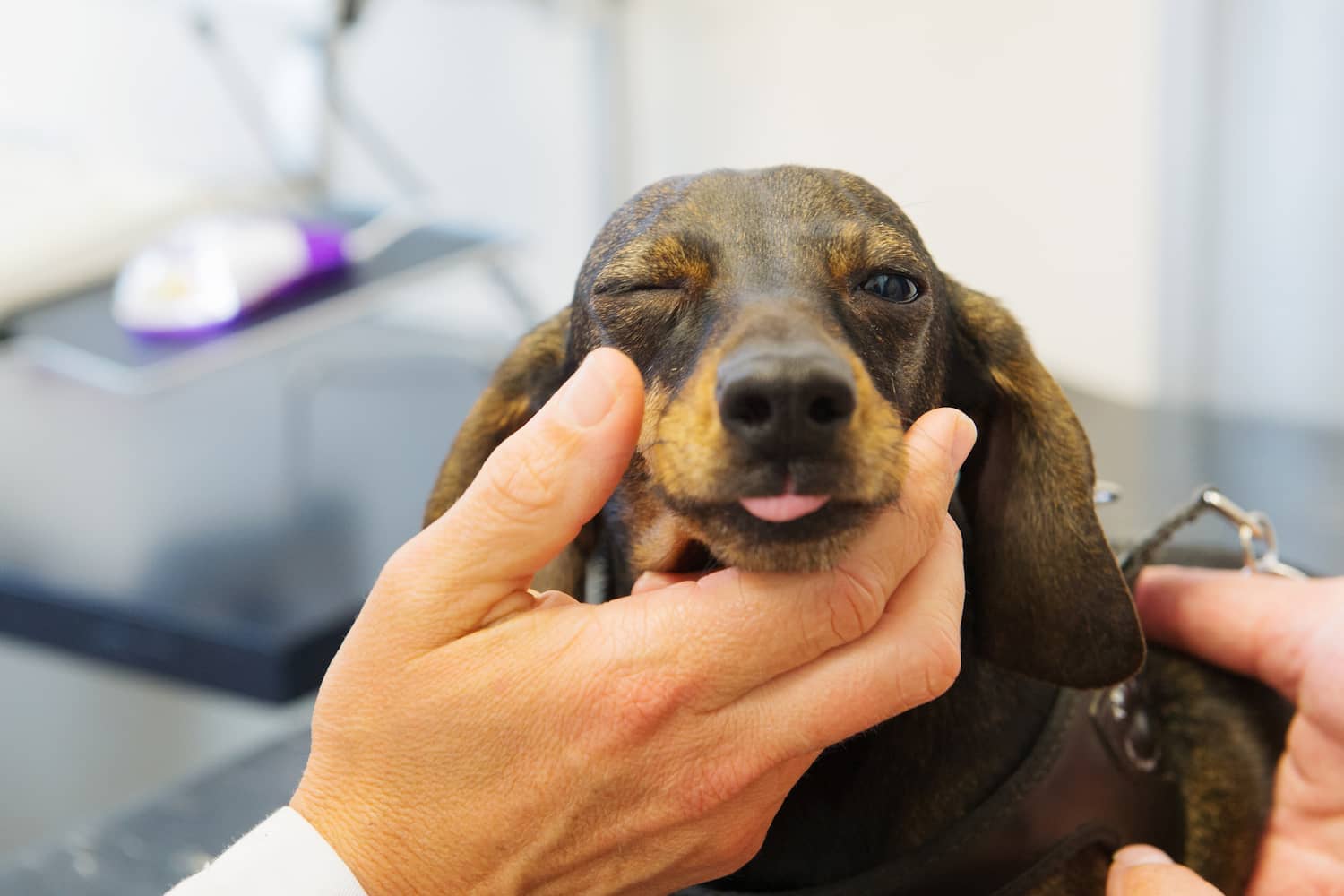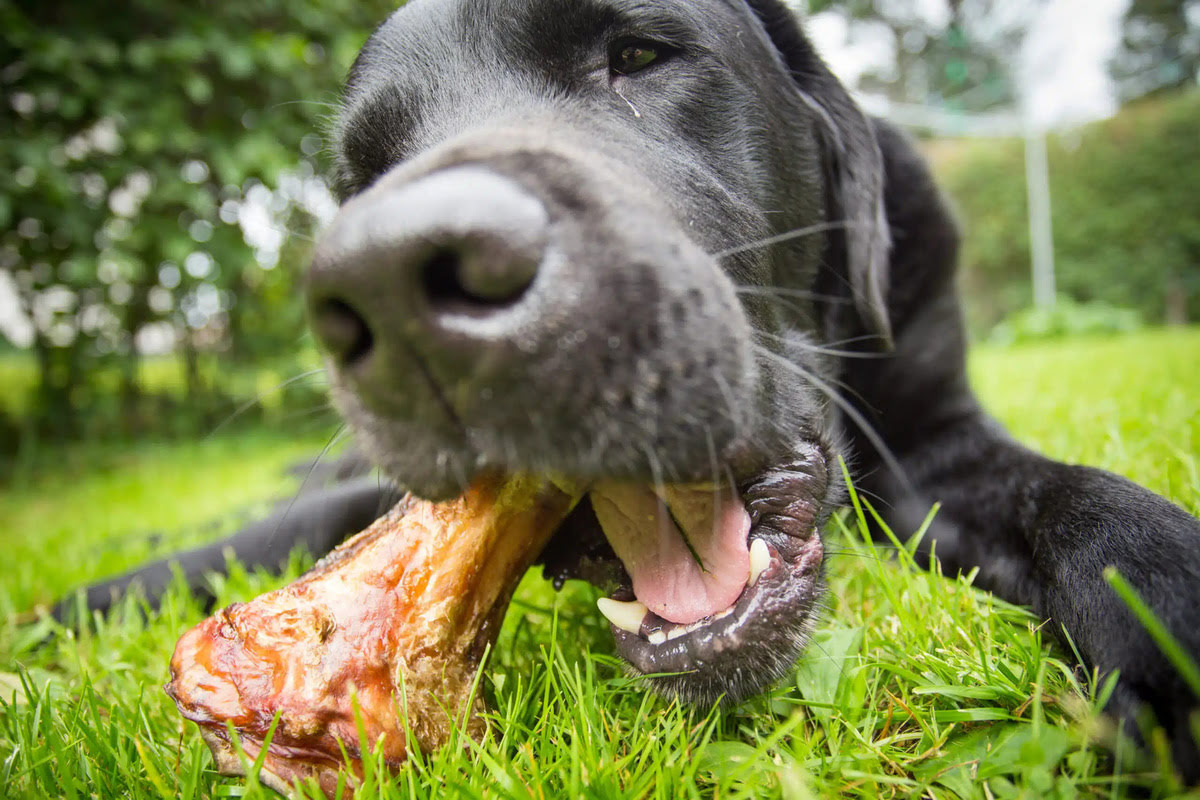Home>Health & Wellness>Nutrition & Diet>How Much Fat Should A Dog Have In His Diet


Nutrition & Diet
How Much Fat Should A Dog Have In His Diet
Published: January 27, 2024
Learn about the ideal fat content in a dog's diet and the importance of nutrition for your pet's overall health. Find expert tips on nutrition and diet for dogs.
(Many of the links in this article redirect to a specific reviewed product. Your purchase of these products through affiliate links helps to generate commission for Pawsomeoldies.com, at no extra cost. Learn more)
Table of Contents
Introduction
When it comes to our furry companions, ensuring their well-being is a top priority. A crucial aspect of their health revolves around their diet, and the role of fat in a dog's nutrition cannot be overstated. Just as with humans, the consumption of fat plays a significant role in a dog's overall health and vitality. However, determining the appropriate amount of fat to incorporate into a dog's diet can be a complex task, as it varies based on factors such as breed, age, activity level, and overall health.
Understanding the impact of fat on a dog's diet is essential for responsible pet ownership. While fat is a concentrated source of energy, providing more than twice the amount of energy as protein or carbohydrates, it also serves other vital functions within a dog's body. From aiding in the absorption of fat-soluble vitamins to supporting healthy skin and coat, fat plays a multifaceted role in a dog's overall well-being.
As pet owners, it's crucial to strike a balance in our furry friends' diets. Too much fat can lead to obesity and related health issues, while too little fat can result in a deficiency of essential nutrients. Finding the sweet spot for fat consumption in a dog's diet is key to promoting their longevity and quality of life.
In the following sections, we will delve deeper into the role of fat in a dog's diet, explore how to determine the right amount of fat for your dog, and discuss the potential risks associated with both excessive and insufficient fat intake. Additionally, we will provide practical tips for achieving a well-balanced diet for your beloved canine companion. Let's embark on this enlightening journey to ensure that our furry friends receive the optimal nutrition they deserve.
Read more: How To Put Your Fat Dog On A Diet
Understanding the Role of Fat in a Dog's Diet
Fat is a crucial component of a dog's diet, playing a multifaceted role in their overall health and well-being. While often associated with weight gain and obesity in humans, the role of fat in a dog's diet is quite different and essential for their optimal health.
Energy Source
First and foremost, fat serves as a concentrated source of energy for dogs. In fact, it provides more than twice the energy of an equivalent amount of protein or carbohydrates. This energy is vital for supporting various bodily functions, including physical activity, organ function, and overall metabolic processes. For active dogs, fat serves as a valuable energy reserve, allowing them to sustain prolonged periods of exercise and activity.
Nutrient Absorption
Moreover, fat plays a crucial role in the absorption of fat-soluble vitamins, including vitamins A, D, E, and K. These vitamins are essential for maintaining a dog's overall health, supporting vision, bone health, immune function, and blood clotting. Without adequate fat in their diet, dogs may struggle to absorb these vital nutrients, potentially leading to deficiencies and related health issues.
Healthy Skin and Coat
In addition to its internal functions, fat also contributes to the maintenance of a dog's skin and coat health. Essential fatty acids, such as omega-3 and omega-6, are integral for promoting healthy skin, a lustrous coat, and overall dermatological well-being. These fatty acids play a pivotal role in reducing inflammation, alleviating skin allergies, and preventing excessive shedding, thereby contributing to a dog's overall comfort and appearance.
Read more: How Much To Feed A Dog On A Diet
Regulation of Body Temperature
Fat also serves as an insulator, helping dogs regulate their body temperature in varying environmental conditions. This is particularly important for breeds that are exposed to extreme temperatures, as adequate fat stores can aid in maintaining their core body temperature and overall comfort.
Understanding the multifaceted role of fat in a dog's diet is essential for pet owners. By recognizing the diverse functions that fat serves in a dog's body, we can appreciate its significance in promoting their overall health and well-being. In the subsequent sections, we will explore how to determine the appropriate amount of fat for your dog's diet and the potential risks associated with imbalanced fat intake.
Determining the Right Amount of Fat for Your Dog
When it comes to determining the appropriate amount of fat for your dog's diet, several factors come into play. These include the dog's breed, age, activity level, and overall health status. Understanding these variables is crucial in tailoring a diet that meets your dog's specific nutritional needs.
Breed and Size
Different dog breeds have varying metabolic rates and energy requirements. Larger breeds may have lower energy needs per pound of body weight compared to smaller breeds. For example, a small, active breed such as a Jack Russell Terrier may require a diet with slightly higher fat content to support their energy levels, while a larger, less active breed like a Great Dane may thrive on a diet with a lower fat content to prevent excessive weight gain.
Age
Age is another significant factor in determining the right amount of fat for your dog. Puppies, who are in their rapid growth phase, require a diet with slightly higher fat content to support their development and energy needs. As dogs transition into adulthood, their fat requirements may change based on their activity level and overall health. Senior dogs, on the other hand, may benefit from a diet with slightly lower fat content to prevent weight-related health issues while still meeting their nutritional needs.
Read more: Why Does My Dog Have A White Spot In His Eye
Activity Level
A dog's activity level plays a pivotal role in determining the appropriate fat content in their diet. Highly active dogs, such as working or sporting breeds, may require a diet with a higher fat content to sustain their energy levels and support their physical exertion. Conversely, less active or sedentary dogs may benefit from a diet with a lower fat content to prevent weight gain and related health issues.
Overall Health
The overall health of your dog is a crucial consideration when determining the right amount of fat in their diet. Dogs with certain health conditions, such as pancreatitis or obesity, may require a diet with reduced fat content to manage their condition and prevent exacerbation of symptoms. Conversely, dogs with specific health needs, such as skin or coat issues, may benefit from a diet with slightly higher fat content to address these concerns.
In essence, determining the right amount of fat for your dog's diet involves a comprehensive assessment of their individual characteristics and needs. Consulting with a veterinarian or a qualified pet nutritionist can provide valuable insights into tailoring a diet that optimally balances fat content with other essential nutrients, promoting your dog's overall health and well-being.
Potential Risks of Too Much or Too Little Fat in a Dog's Diet
Maintaining a well-balanced fat intake is crucial for a dog's overall health, and deviations from the optimal fat levels can pose significant risks. Understanding the potential consequences of both excessive and insufficient fat in a dog's diet is essential for responsible pet ownership.
Risks of Too Much Fat
Excessive fat consumption can lead to a myriad of health issues for dogs. The most immediate concern is obesity, which can predispose dogs to a range of secondary health problems, including diabetes, joint issues, and cardiovascular disease. Additionally, overweight dogs may experience reduced mobility and a diminished quality of life.
Furthermore, a diet high in fat can strain a dog's digestive system, potentially leading to conditions such as pancreatitis. This inflammatory condition of the pancreas can cause severe abdominal pain, vomiting, and diarrhea, requiring immediate veterinary attention.
Risks of Too Little Fat
Conversely, insufficient fat in a dog's diet can also have detrimental effects on their health. A deficiency of essential fatty acids, such as omega-3 and omega-6, can manifest in dry, flaky skin, a dull coat, and increased susceptibility to skin irritations and allergies. Moreover, inadequate fat intake can impair the absorption of fat-soluble vitamins, potentially leading to deficiencies in vitamins A, D, E, and K, and subsequent health issues.
Insufficient fat can also impact a dog's energy levels, potentially resulting in lethargy and reduced stamina, particularly in active breeds. Furthermore, a diet lacking in essential fats may compromise a dog's ability to regulate body temperature, especially in extreme environmental conditions, posing risks to their overall well-being.
By understanding the potential risks associated with both excessive and insufficient fat in a dog's diet, pet owners can make informed decisions when selecting and managing their dog's nutrition. Striking a balance in fat intake is paramount to safeguarding a dog's health and ensuring their vitality and longevity.
In the subsequent section, we will explore practical tips for achieving a well-balanced diet for dogs, encompassing appropriate fat levels and overall nutritional considerations.
Tips for Balancing Fat in Your Dog's Diet
Ensuring that your dog's diet strikes the right balance of fat is essential for their overall health and well-being. Here are some practical tips to help you achieve a well-balanced diet for your beloved canine companion:
-
Consult with a Veterinarian: Before making any significant changes to your dog's diet, it's crucial to consult with a veterinarian. A professional assessment can provide valuable insights into your dog's specific nutritional needs, including the appropriate fat levels based on their breed, age, activity level, and health status.
-
Select High-Quality, Balanced Dog Food: Opt for high-quality dog food that is specifically formulated to meet the nutritional needs of your dog. Look for well-balanced options that provide optimal levels of protein, fat, and essential nutrients. Reading the ingredient list and nutritional information can help you make informed choices.
-
Consider Your Dog's Activity Level: Tailor your dog's fat intake based on their activity level. Highly active dogs may benefit from a diet with slightly higher fat content to support their energy needs, while less active dogs may require a diet with a lower fat content to prevent weight gain.
-
Monitor Body Condition: Regularly monitor your dog's body condition to ensure they maintain a healthy weight. Adjust their fat intake as needed to prevent obesity or excessive weight loss. A healthy body condition is indicative of a well-balanced diet.
-
Incorporate Healthy Fats: Include sources of healthy fats in your dog's diet, such as fish oil, flaxseed oil, and poultry fat. These sources provide essential fatty acids, including omega-3 and omega-6, which are integral for supporting your dog's skin, coat, and overall health.
-
Avoid Feeding Table Scraps: Refrain from feeding your dog excessive table scraps or high-fat human foods. While an occasional treat is acceptable, a consistent intake of high-fat foods can disrupt the balance of their diet and lead to health issues.
-
Monitor for Digestive Issues: Keep an eye out for any digestive issues that may arise from changes in your dog's fat intake. Symptoms such as vomiting, diarrhea, or changes in appetite may indicate that the fat levels in their diet need adjustment.
-
Regular Exercise: Pairing a well-balanced diet with regular exercise is crucial for your dog's overall health. Physical activity not only supports their energy expenditure but also contributes to their overall well-being.
By implementing these tips and staying attuned to your dog's individual needs, you can effectively balance the fat content in their diet, promoting their longevity, vitality, and overall quality of life. Remember, a well-nourished and healthy dog is a happy companion.
Conclusion
In conclusion, the role of fat in a dog's diet is multifaceted and pivotal for their overall health and well-being. Understanding the diverse functions that fat serves, from providing energy to supporting nutrient absorption and maintaining healthy skin and coat, is essential for responsible pet ownership. Striking the right balance in a dog's diet, tailored to their individual characteristics and needs, is paramount in promoting their longevity and vitality.
Determining the appropriate amount of fat for a dog's diet involves a comprehensive assessment of factors such as breed, age, activity level, and overall health status. Consulting with a veterinarian or a qualified pet nutritionist can provide valuable insights into crafting a well-balanced diet that optimally balances fat content with other essential nutrients.
Moreover, being mindful of the potential risks associated with both excessive and insufficient fat intake is crucial. While excessive fat can lead to obesity and related health issues, insufficient fat can result in deficiencies of essential nutrients and compromise a dog's overall health. By recognizing these risks, pet owners can make informed decisions when selecting and managing their dog's nutrition, safeguarding their well-being.
Practical tips for achieving a well-balanced diet, encompassing appropriate fat levels and overall nutritional considerations, can empower pet owners to provide optimal nutrition for their beloved canine companions. From consulting with a veterinarian to selecting high-quality, balanced dog food and monitoring body condition, these tips serve as a guide to promoting a healthy and balanced diet for dogs.
Ultimately, the well-being of our furry friends hinges on the care and attention we devote to their nutrition. By understanding the role of fat in a dog's diet, tailoring their diet to meet their specific needs, and being mindful of potential risks, we can ensure that our canine companions thrive and lead fulfilling lives. A well-nourished and healthy dog is not only a joy to have as a companion but also a testament to the dedication and love we have for our beloved pets.












